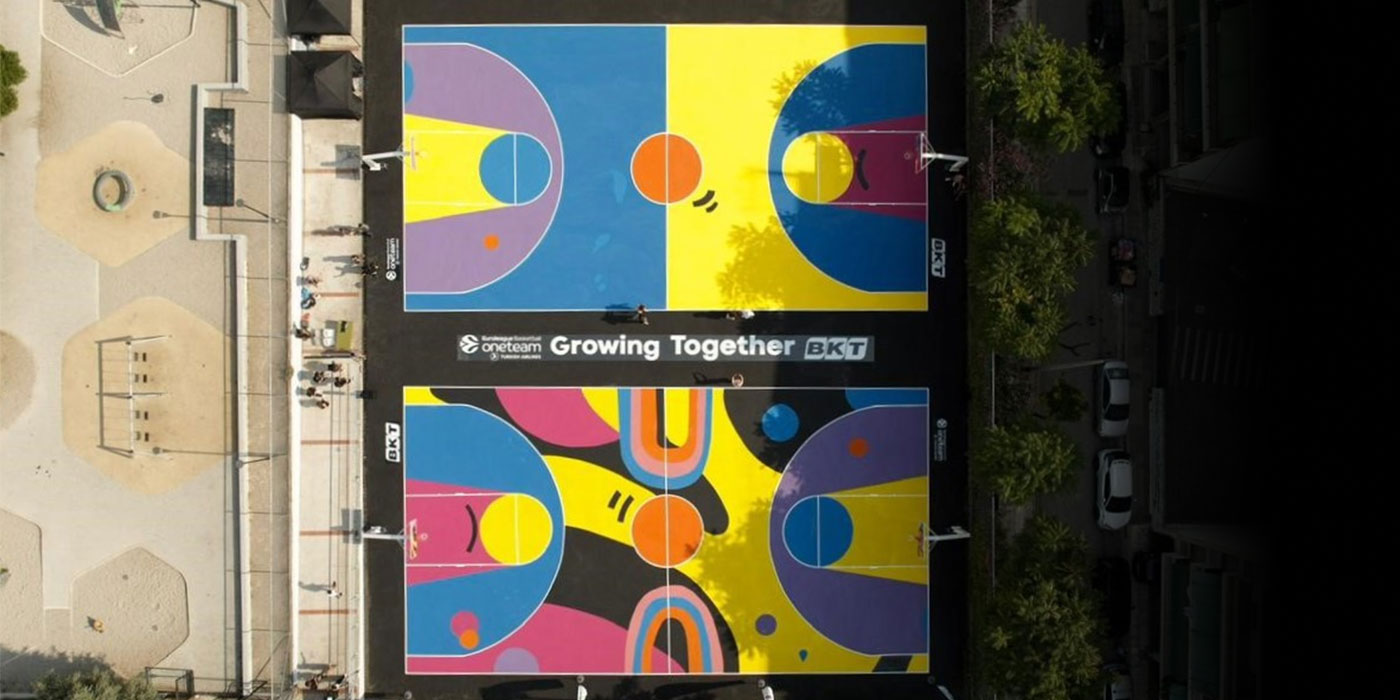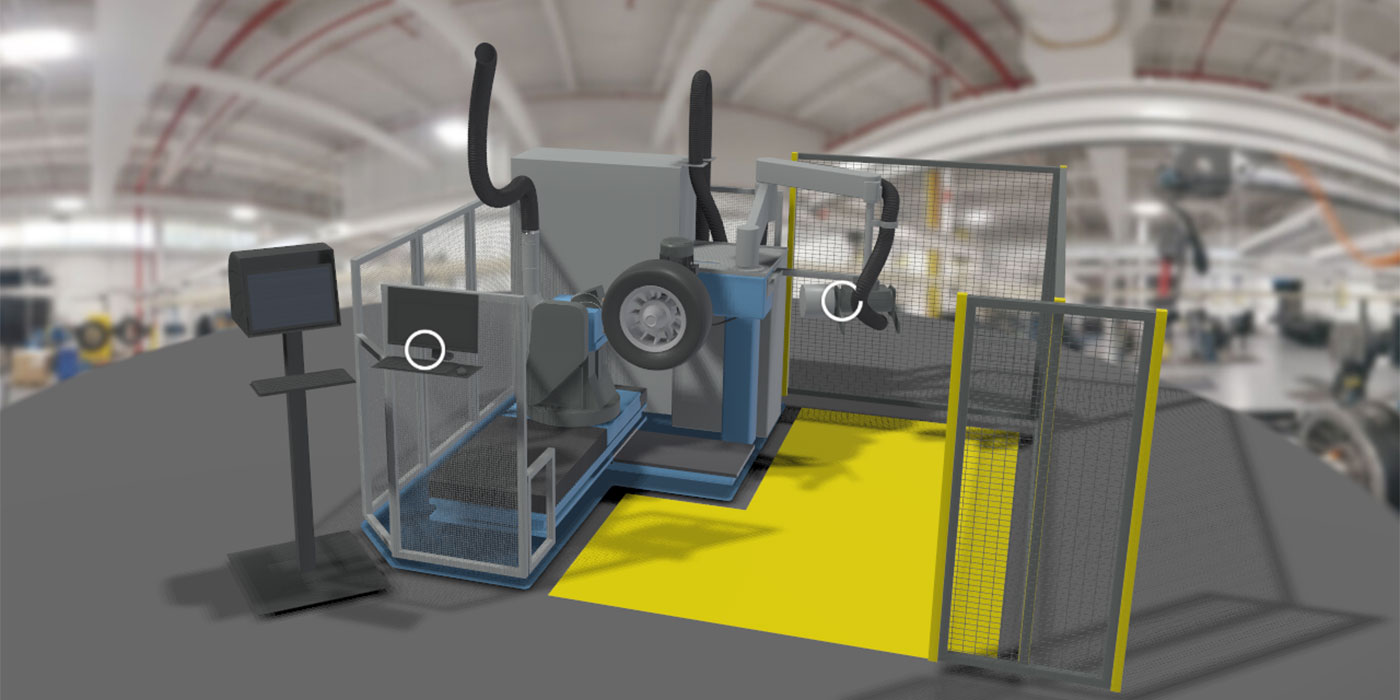India still imports tyres, and the volume of imports is forever growing. Nevertheless, the import market still accounts for less than three per cent of the total, although decreasing tariffs and duties over the coming years will certainly facilitate tyre imports.
But the question remains why Goodyear and Bridgestone remain the only foreign tyre manufacturers to have established their own production base in India – despite all the talk about how important the Indian market, as part of the so-called emerging BRIC states (Brazil, Russia, India and China), is considered to be.
India has long been established as a part of Goodyear’s global operations. Since the American company first established a presence in India in 1961 it has constructed two tyre factories, one in Aurangabad (Maharashtra; close to Mumbai) and another in Ballabgarh (Haryana; close to Delhi). It was at the Ballabgarh plant, some 30 kilometres from the Indian capital, where Goodyear produced its first Indian tyre back in the early 1960s. Some decades later, in 1993, Goodyear established a 50:50 joint venture with South-Asian Tyres Ltd. in Aurangabad, and five years later the American company took full control of this facility.
With its second tyre factory in place, Goodyear began to earn a reputation as being a technological innovator in the unique and distinctive Indian tyre market, a market that currently boasts 43 tyre manufacturers producing tyres on a permanent basis. For example, the team at Goodyear India Ltd. can proudly point out that it was they who launched the very first Indian-made tubeless radial back in 2002.
Goodyear’s pioneering work is highly esteemed amongst industry leaders, but apart from the credit the Americans deserve for this new technology, the market hasn’t really changed accordingly. Tubeless radial tyres still only take up an approximate market share of between ten and 15%, says the Indian Automotive Tyre Manufacturer’s Association (ATMA), of which Goodyear India is one of the association’s seven current members. The vast majority of radial tyres on the Indian market are still used with tubes inside. Currently, radials account for 90% of passenger car tyre market, 11% of the light truck tyre market, and only a very small 2% to 5% of the (heavy) truck tyre market.
Since Goodyear has now produced tyres in India for more than 45 years, it produces a comprehensive range covering almost every type of tyre the Indian tyre market caters for. There are few products that aren’t offered. Truck radials, for example, are one such product; they aren’t even produced locally for Goodyear’s export markets. The reason for this has already been given – as yet there is just no market for these tyres in India. But what Goodyear lacks in terms of innovation in the Indian truck tyre market is more than compensated by the development of tubeless radial tyres. Goodyear is at the avant-garde of this new and growing market.
Although Goodyear also offers the traditional tyre and tube combination in the radial tyre segment, the company concentrates on the development and marketing of tubeless radial tyres. The passenger car radial tyre market in India is currently growing at an annual rate of about 15%. The tubeless segment in turn outpaces this strong development, growing by 30% every year, the Indian media writes.
“Some car manufacturers in India have already changed to fitting tubeless radial tyres as original equipment,” says Antonio Capellini. The chairman and managing director of Goodyear India Ltd. also points out that these changes on the OE front will in the mid-term generate a growing demand for replacement market tubeless radial tyres. Therefore, Goodyear India believes that it will have the right products, a suitable production capacity and the right technology once the demand arrives. At the moment tubeless radial tyres are mostly sold in urban regions. In the future demand will also arise from rural areas.
As a result of this anticipated growth, Goodyear has just recently announced that its own distribution network across India will be enlarged during the coming years. By 2008, Goodyear plans to have installed more than 300 so-called shop-in-shop outlets. This will cost the tyre manufacturer about £5.6 million. Last year Goodyear opened this new Indian retail network’s first 50 outlets, and another 250 will be added over the coming two years. This is a first step in the right direction – at Goodyear India’s headquarters in Ballabgarh it is estimated that there are about 9,300 tyre dealers in India, excluding all the thousands of back-yard shops.
Together with the enlargement of Goodyear India’s distribution and thus service network, the company wants to invest in the expansion of its production capacities to be ready for the growing demand for tubeless radial tyres once this technology is established. Sales and marketing director Mahesh Krishnan points out that the plans for expansion at Goodyear’s modern production site in Aurangabad near Mumbai will be realised by 2008. Currently, Goodyear produces about 4,500 tyres every day, mostly passenger car tyres, in this plant. These tyres are already sold to every single one of India’s OE customers. By 2008 ,this production capacity will be expanded up to 10,000 passenger car tyres per day. In order to achieve this Goodyear India has to invest 800 million rupees (£9.2 million).
While Goodyear mainly produces modern passenger car tyres in its Aurangabad facility, such as its new ‘Excellence tyre’ – India’s first low-aspect-ratio tyre, it primarily produces commercial tyres in its older Ballabgarh factory. With these products, Goodyear India has become the leading player in the agricultural tyre market, says Mahesh Krishnan, and the company supplies the country’s most important OTR tyre manufacturers.
Compared to other tyre manufacturers, Goodyear India is a modestly sized company. Apollo Tyres and MRF, for example, both have an annual turnover of about £656 million, Goodyear India was able to generate an annual turnover of 6.71 billion rupees (£77 million) in 2005 – figures for 2006 aren’t yet available. Two thirds of this was generated with products produced in Ballabgarh (63.2%). These products are mostly commercial tyres but also include some passenger car tyres. The rest obviously stems from the Aurangabad facility, which is formally operated by the legal entity of Goodyear South Asia Tyres Pvt. Ltd. (GSATPL) but sells its tyres through Goodyear India Ltd. GSATPL supplies these tyres under an offtake agreement. For 2004, Goodyear India reported an annual turnover of 6.23 billion rupees (£71.4 million). Consequently the company grew by 7.7% in 2005.
Although Goodyear India created an annual turnover of 6.71 billion rupees, its net profit only was 88 million rupees (£1 million) in 2005. Consequently, Goodyear has to accept a small margin of about 1.3% in India. In 2004, this margin was even smaller, at 0.8%, so it appears that the beginning of a positive trend started developing during the past year. As the company reports, it has generated a turnover of 5.91 billion rupees (£68 million) during the first three quarters of 2006. For the whole financial year this could add up to 7.88 billion rupees (£90 million) if the company can also repeat its recent performance during the fourth quarter of 2006 – this would equate to an annual growth of about 18% compared with 2005.
Equally positive has been the development of Goodyear India’s net profits. As the tyre maker reports, in quarters one, two and three, it has amassed a net profit of 349 million rupees. This already is quadruple what Goodyear India was able to achieve during the entire 2005 financial year. This obviously will lead to an improvement of margins as well if – we must reiterate – the performance in the fourth quarter matches that of the preceding three quarters.
During the third quarter alone, Goodyear India managed to attain a net margin of 7.5%. In previous years, Indian market insiders sometimes criticised and occasionally mocked the company, saying that the Goodyear Tire & Rubber Co. – Goodyear India’s parent company – had “deep pockets.” The implication was that the American tyre major was accepting low profitability from its Indian offspring for reasons of being present in the market. But this was some time ago. Today, it instead even looks as if Goodyear India will be able to contribute to the parent company’s turnaround policy and its growing profits.
However, as of Oct. 1, 2006, a new license fee system came into effect. Since then, Goodyear India has been required to pay the Goodyear Tire & Rubber Co. for the use of the Goodyear brand name registered by the Americans in Akron. For Goodyear brand tyres both produced and sold in India, this fee is 1% of turnover. A fee of 2% applies on tyres produced for export. This will definitely be burdensome for a company that has operated on wafer-thin margins during the recent past.
Therefore, it is somewhat difficult to predict how the 2006 financial year will turn out, although the first three quarters indicate that Goodyear is going to have a good year in India. Another indicator why Goodyear India should end its 2006 financial year with promising figures on its balance sheet is decreasing raw material prices. In India, raw material costs make up about 60% to 70% of total tyre production costs. Because raw material prices – in particular, rubber prices – have recently gone down, it can almost be taken for granted that Goodyear India will see improvements compared with 2005.
Goodyear India is an Indian tyre company that doesn’t appear to be highly integrated into the international Goodyear corporation. From its 6.71 billion rupees turnover (2005) only 76.2 million have been generated from export markets. Thus only 1.1% of Goodyear India’s turnover has been made abroad. The preceding year the export ratio was almost the same. The few tyres that are exported are mainly sold in neighbouring countries, as well as in Australia, Hong Kong, Dubai or the Philippines. Goodyear currently produces almost 2.8 million tyres per year in its two tyre factories in India.
Bridgestone: 11 years in India
Bridgestone Corp. doesn’t have a long history in the Indian subcontinent. While Goodyear has been around for 45 years, Bridgestone only entered the Indian tyre market with its own production facility 11 years ago. Bridgestone gained a foothold in India via the same means still generally employed today in emerging markets: just like Goodyear in Aurangabad, Bridgestone has chosen a joint venture partner. In 1996 the tyre major entered into a joint venture agreement with the Associated Cement Companies of India Ltd. (ACC), which was later renamed ACC Limited.
Until the cement manufacturer sold its stake in the tyre factory to Bridgestone in 2003, the joint venture was officially called Bridgestone ACC India Ltd. and was based in Kheda (Madhya Pradesh). When the joint venture became a 100% Japanese subsidiary about three years ago, the tyre manufacturer was again renamed Bridgestone India Pvt. Ltd. In 2003 ACC still held about 20% in the company.
Every year, Bridgestone produces about 2.7 million tyres in India at its Kheda factory; 900 people are employed there. Managing Director Hisao Ikawa recently announced that production capacity would be increased in the course of this year to more than 3 million. Bridgestone India solely produces radial passenger car and light truck tyres, as well as matching tubes. In addition, the Indian subsidiary also supplies several OE customers.















